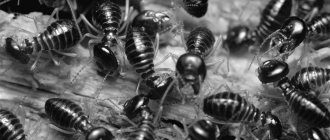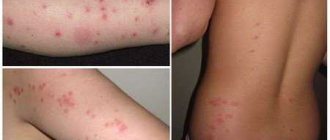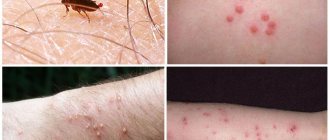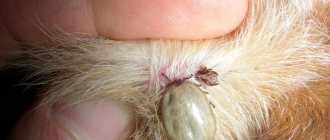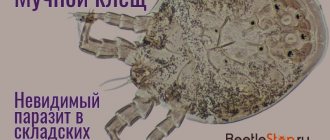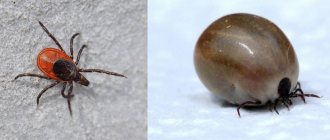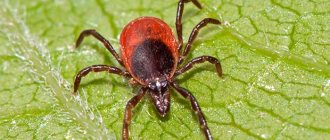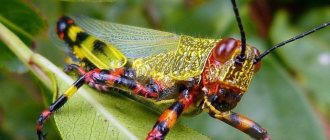Amphipod is a representative of the crustacean class. It is also called freshwater shrimp and sea flea. He is very fast and agile.
When going on vacation, you can often find amphipods near the seashore and in the coastal zone. They inhabit sea sand in huge quantities. Large colonies can settle in discarded seaweed along the beach line.
There are many types of crustaceans, some of them carry a number of infectious diseases and can cause allergic reactions.
Amphipods are distributed everywhere, in fresh and sea water. The number of species includes more than 8,000 varieties. There are a small number of parasitic forms called whale lice. Among the representatives of the species there are predatory individuals, such as the sea goat. It settles in a grassy thicket and tracks prey from behind, hunts with the help of its front claw, and when it encounters prey, it attacks it.
It is of great economic importance, both in fisheries and poultry farming. It is a protein supplement for feeding birds and fish.
They are especially important for commercial fish, as they form the basis of their diet. Bream, flounder, trout, and omul eat it. With the help of artificial breeding in the reservoir, amphipods serve as food for fish.
Where does it live?
In fresh water there are the maximum number of species of amphipods. About 50 different species live in Lake Baikal. To catch omul, fishermen specially collect amphipods from the lake, and then place them in fishing holes.
Amphipods are widespread throughout the world. It is called mormysh in Western Siberia, in the Caspian Sea it received the nickname stenog, Siberians call it barmash. They can live in a group on a whale and eat its skin. Because of this, the whale is covered with deep ulcers. This subspecies of crustaceans is the whale louse.
The Krasnoyarsk and Angarsk reservoirs contain about 30 species of amphipods. They inhabit the bottom and prefer planktonic activity.
They love to lie on the shore, buried in the sand, not far from the water. Sometimes on the coast you can see a layer of crustaceans that move and jump. They can live in very large groups.
During daylight hours, sea fleas hide among the stones and among the algae growing on the shore. And at night they move along the beach line in search of dead plants, which they need for food. The crustacean can only live in water, on a damp surface, since its respiration is carried out using gills. A special feature of the sea flea is its excellent orientation to the sun. It will move in the direction where the sun's rays go. At night, their reference point is the moon. They are well oriented in space at night.
They can immerse their body in the sand as quickly as possible, while the thoracic legs help the body bury itself deeper. This work is done with lightning speed. Due to the high speed of movement, sea fleas migrated from the sea to rivers. So, being in the Caspian Sea, they moved along the Volga and spread along its entire trajectory.
In Russia, all species are resistant to cold; they can be found both in summer when the weather is warm, and in winter. In the cold season, crustaceans cling to the ice crust of the reservoir. They prefer clean salt water.
Marine amphipods live in the Caspian, Black and Azov seas. They live in rivers and lakes flowing into the seas. They can live for a short time in artificial conditions, in an aquarium in the presence of sand and food.
Actions when bitten
If you find a sea flea bite, remember not to scratch the skin, as this leads to infection. You should take some steps and use products that will improve the condition of the affected skin area and relieve symptoms.
These include:
- Shower. The very first thing to do is take a shower. But it is very important to shower without a bathing suit. The fact is that there may be larvae on it, which already at this stage of development need nutrition and cause painful bites. After the attack of the larvae, a rash and irritation appear. It is also necessary to wash your swimsuit/swimming trunks and towels. Before washing, they are wiped with alcohol or vinegar, and then washed using detergent.
- Vinegar, alcohol. These remedies help get rid of unbearable itching. To do this, you need to soak cotton wool in vinegar and apply it to the affected area, then let the product dry on the skin. You can also dilute alcohol with water and apply it to the bite, in this case it helps get rid of toxins.
- Cold compress. You can use ice, which is wrapped in a cloth or towel and applied to the sore spot. Allows you to relieve swelling and get rid of severe pain.
- Calamine lotion. This remedy perfectly relieves itching. This drug is not recommended for use in children under 6 months of age, as well as in pregnant women and during breastfeeding. Hydrocortisone ointment has a similar effect, but for children under 10 years of age it can only be used after consultation with a doctor.
- Soda. This remedy will help get rid of itching and relieve inflammation. You can use soda as a compress; for this, take 3 tablespoons of soda and dilute with 1 spoon of water. A thick paste is applied to the affected area for half an hour. You can also take a bath with baking soda; for this you need to use 1 glass of powder per bath of water. You need to stay in such a bath for at least half an hour. Instead of baking soda, you can add 2 cups of oatmeal to the bath, which has a similar effect. Remember that the water should not be hot, as this can make the situation worse.
- Aloe vera. Preparations with aloe vera have an excellent effect on the skin, relieve inflammation, and reduce irritation.
- Essential oils. Cedarwood, lavender, and tea tree oils are used, which relieve irritation well.
- Anti-inflammatory, non-steroidal drugs. They help relieve pain and inflammation, these include aspirin, ibuprofen and others.
If you detect a bite from a female, be sure to consult a doctor, since it is necessary to remove the parasite in order to prevent complications. In addition, when the symptoms do not go away, and the site of the lesion is disturbing, medical attention will also be required, since this indicates an infection or a possible allergy to the saliva of the parasite, which requires treatment.
Unfortunately, there are cases where, after a bite from this small parasite, sepsis developed, which led to amputation of the fingers. An attack by these fleas cannot be ignored as the consequences can be quite serious and life-threatening. Sometimes symptoms manifest themselves as headaches, nausea, weakness, fever, which in turn, without proper treatment, leads to serious consequences.
What does it eat?
They prefer aquatic vegetation, animal remains, and rotten matter as food. Thus, the amphipod is omnivorous. In their diet they prefer underwater plants, fish remains, soil particles, and algae. Because Amphipods spend most of their time in the water; during the day they sink to the bottom, try to get to land and search for food in the coastal zone.
Some species obtain their food using filtration. In its home, the animal creates a strong flow of water with its legs and passes the water through a filter that looks like a brush. Bottom dwellers use soil pebbles in their mouths as food. Underground inhabitants also use animal remains and parts of plants as nutritious food, giving them strength for growth and reproduction. All species, without exception, feed much more intensively in autumn and winter compared to spring and summer.
Some species can attack their smaller individuals, attack jellyfish and worms.
Benefits for the ecology of the beach
Environmental scientists have proven that fleas naturally clean coastal sand by feeding on microorganisms living in it. However, they, of course, are unable to process pieces of cigarette butts, chips, meat - everything that careless vacationers leave behind in the city beach area.
Crawling out of their hiding places in the evening, crustaceans also clean coastal waters. Small sacs in the area of the front legs allow them to breathe oxygen.
Do not panic and deprive yourself of a sea holiday, thinking about bites and their consequences. Gammarus, the photo of which you see in the article, is not so scary. If you follow the basic rules of caution, it will not interfere with any rest.
When did they appear
Amphipods appeared during the Stone Age of the Paleozone, about 400 million years ago. The first mention of this species dates back to the 19th century. To this day, ancient representatives of crustaceans have been preserved thanks to amber. Many millions of years ago, amphipods fell into a drop of molten amber, and thus today scientists can study this species, preserved in excellent condition.
Features of treatment
If a flea does bite, you should not treat its bite like a mosquito bite. If you find suspicious abscesses, lumps on the skin, inflammatory heads, especially those accompanied by pain, you must go to the hospital where the flea will be removed. You should not try to pull it out yourself, like an encephalitis tick, by pouring oil on the flea. The body of a flea is very fragile, it can break, and its particles will remain in the wound, causing more and more suppuration.
For itching, you can use antihistamines and any anesthetic cream. The good old remedies also help a lot – a compress with soda.
Parasites can be found in the sands of the beaches of Southeast Asia, Africa, South America, and India
It is important not to scratch the bites to avoid infection.
Sea fleas rarely bite – and this is a big plus. But when going to hot countries, you need to be prepared to encounter this parasite and know what to do if, despite all the tricks, a sea flea bites you.
What does it look like
Amphipod is a small crustacean, the length of the average representative is up to 1 cm, a large individual grows up to 2.5 cm. Amphipod differs from other crustaceans in the absence of carapace.
The body is flattened on both sides. The legs have different structures.
The front part of the body combines the head and chest; in front it has a large pair of false claws, only with their help it captures food.
The other two pairs resemble claws directed towards the head, the lower pairs are directed towards the tail. It is the claws that help with movement. The tail part consists of the excretory system, which includes the intestine and anus.
The abdomen consists of two sections - the pleosome and the urosome, consisting of several parts. The pleosoma carries out swimming movements.
The animal's body is devoid of coloring pigment, but may have a greenish tint.
Amphipods are divided into males and females. Depending on gender, they vary significantly in size. Depending on the species, females may be larger than males, and vice versa. A sexually mature female is equipped with a brood pouch, where she lays and carries eggs. Her offspring mature in about a week.
In the body of the male amphipod, a special male hormone is secreted with the help of androgenic glands. Animals can mate for several days. Different types of crustaceans lay a certain number of eggs, on average from 10 to 100 per mating. As a rule, reproduction occurs in the warm season. During the winter, the female carries eggs, and in the spring new offspring are born. Individuals live about 2.5 years.
The body is divided into head, abdominal and lower sections. There are two pairs of eyes on the head. Has two antennas on its head.
Danger to humans
Despite the enormous benefits for the environment, these parasites, like other fleas, can attack humans in order to satisfy hunger. They do not disdain human blood and therefore often attack vacationers. Both female and male individuals can attack, but the bites differ from each other.
For example, when a male bites, it requires a small amount of blood to saturate, the bite occurs quickly, it is comparable to a mosquito. After a bite, the area is swollen and accompanied by itching. In the case of a female bite, it is compared to a tick attack.
The female needs much more time to saturate; just like a tick, she strongly attaches to the blood vessel and penetrates under the skin. The female needs food to reproduce. In addition, the symptoms are also different; the affected area in the female specimen swells greatly; in the center you can see a black dot, which is the parasite itself. A white abscess also appears and the affected area begins to hurt.
The female continues to suck blood until her offspring mature, and as she satiates, she increases significantly in size. When the eggs mature, she shoots them out over fairly large distances. After the eggs are laid, the female dies without leaving the human body. This leads to serious consequences, since insect remains provoke inflammation and suppuration, which in turn leads to the development of tungiasis and sarcopsillosis. Medical care and proper treatment are necessary, without which gangrene and blood poisoning may develop, which, as is known, lead to the death of a person. Most often, fleas attack the areas of the feet, legs, buttocks and groin.
Interesting Facts
- They have an amazing ability to clearly identify landmarks, even if they have gone a long distance from their habitat.
- The parasite is the whale louse, which settles on the whale and feeds on the epidermis.
- The small crustacean leads a measured life, can rarely leave its hole and feeds only by filtering water.
- When in the water of a shallow stream or near the shore, the crustacean swims on its side. At depth it swims with its back up.
- One individual lives from one to two years.
Gammarus - who are they?
Few people know that the name of this inhabitant is “sand sea flea.” Bites from a small crustacean creature can not only cause pain, but also completely ruin your entire vacation.
In the scientific world, fleas living in sea sand are called gammarus. Few people know about their existence, and even if they have such an idea, they are of the erroneous opinion, thinking that the habitat of the small bloodsucking creatures is located somewhere on the far southern shores. This opinion does not coincide with reality. The sandy beaches of the middle zone have become almost native to gammarus, and not a single vacationer is immune from the possibility of getting bitten by them.
People who permanently live in close proximity to the sea coast know about the existence of parasites from the Talitridae family, calling them beach fleas. But vacationers, and even those who have come from afar, are unlikely to realize that the sand under their feet and the algae are simply teeming with these creatures.
Symptoms of flea infestation
The incubation period of the disease lasts from 8 to 12 days. The main symptoms indicating sand flea infestation are:
- development of erythema at the site of flea penetration under the skin;
- the appearance of a rash in the form of papules around the affected area;
- severe itching and peeling at the site of the bite;
- swelling of the affected area;
- severe pain when touched;
- the appearance of skin ulcers;
- hyperplasia and the appearance of formations resembling warts (with damage to the genital organs);
- temperature increase.
Bacteria often enter the body through an open wound, leading to the development of a secondary infection.
You can become infected with sarcopsillosis at any time of the year, but the largest outbreaks of the disease occur in the spring and autumn months.
The many faces of sandfly
It’s worth changing the sand flea a little to sandfly - and the solution will come closer.
In non-American English, sandfly is translated as "mosquito" (family Phlebotomidae
).
Mosquitoes should not be confused with the mosquitoes that pester us in the forest (family Culicidae
);
Few people have seen mosquitoes, like fleas; they live in arid regions, for example in Central Asia (and therefore the name sandfly in relation to them is quite justified). If someone still wants to get acquainted with mosquitoes in person, then I can recommend Turkey as a resort area, where they are present, albeit only a little, on the vast sand dunes around the ruins of ancient Side. To a non-specialist, mosquitoes look like ordinary blood-sucking mosquitoes, only clearly small. However, during the day they sit in shelters, most often in rodent burrows, and fly to bite at night. That's why it wasn't mosquitoes that bit my friend on the beach on Koh Chang.
In American English sandfly means or horsefly (Tabanidae
), or the smallest mosquitoes from the family
Ceratopogonidae
, which in Russian are called “mokretsy”. (I can’t even imagine why horseflies and biting midges are called “sand flies”: horseflies have nothing to do with sand; midges are not only not sand flies, but not even flies, but mosquitoes. For clarification, please contact the Americans.) Horseflies in Thailand there are, but even cows and horses, when they are bitten by a horsefly, notice it well and react adequately. It was clearly not them who offended my friend. But biting midges are the correct answer. These small (usually 1.0–1.5 mm) creatures (Fig. 4) have earned their own word in the Russian language for a reason.
Description of appearance
Water fleas belong to the order of crustaceans. Small creatures with a body length of no more than 6 mm have an outwardly similar body shape, which is why they received the name fleas.
- The body color is light and transparent. Under a microscope you can clearly see what is happening inside. The body is covered with small scales, which have an interesting structure - they end with two hooks.
- The head is small, barely noticeable. Five pairs of limbs. The rear ones are slightly longer. The crustacean crawls well, clings to algae and plants with its paws, but does not jump, as befits terrestrial fleas.
- One eye. It is extremely mobile and includes several simple eyes. Many people are afraid of water fleas because of the danger of being bitten, but they need to be afraid of something completely different.
Below are water fleas in the photo. The structural features of the body and each of its components can only be seen under a microscope.
Daphnia or water fleas
Fire worms
Despite the creepy name, they look quite cute: a bright orange caterpillar with fluffy white bristles. The size can reach 40 cm, but usually it is about 10 cm. Some wildlife lovers find it difficult to restrain themselves from grabbing the handsome man in their hands. This should not be done under any circumstances: the worm instantly parts with its bristles, they scatter in the water and stick straight into your hands. The spines contain capsules containing poison containing a neurotoxin. The skin turns red, swells, dizziness and nausea begin.
Where do they meet?
: Mediterranean Sea, Adriatic coast.
Security measures
: Do not swim on wild beaches - fireworms accumulate right in the shallow water between the rocks. They themselves are timid and non-aggressive; they will not attack unless disturbed. If you are diving on an unequipped beach, wear rubber slippers - they will protect your feet.
If you are injured by a fireworm, you need to remove the poison capsules. Use tweezers if you see spines, or regular tape if the bristles are not visually visible. After this, the wound should be wiped with alcohol. And don’t forget to see a doctor - if the affected area is large, you will be prescribed antibiotics.
Newsline
Today, 18:15
Meladze showed his 17-year-old daughter, who is growing up to be a real beauty: “What is she like?”
Today, 18:14
The central part of Melitopol was left without electricity: it became known why
Today, 18:10
They will calculate it themselves - Melitopolgaz told who will have to pay for gas at average rates
Today, 18:08
Tymoshenko responded to rumors about plastic surgery for the first time
Today, 18:00
A tourist found a titanium ball with inscriptions in Russian in the Bahamas
Today, 17:56
The minibus driver who drove into an electrical pole in Zaporozhye was informed of suspicion
Today, 17:48
A robber who attacked a woman near Melitopol was detained in the Donetsk region - the results of a special police operation
Today, 17:27
In a village near Zaporozhye, animals were caught on camera trying to get into a cage with rabbits (video)
Today, 17:22
Minibuses may disappear in Melitopol – what are they offering in return?
Today, 17:01
In Melitopol, they are looking for the owner of a cat with torn claws (photo)
Today, 16:52
In Chernigov, a 13-year-old schoolboy jumped from the eighth floor: he is now in the hospital
Today, 16:50
Osama bin Laden's son became interested in drawing - landscapes help him deal with childhood traumas
Today, 16:44
Three organ transplants were successfully performed in the Zaporozhye regional hospital
Today, 16:41
But there was no ring - an intractable lady in Melitopol threw a huge bouquet of roses into the trash (photo)
Today, 16:28
Stepanov explained why vaccines are thrown into the trash: this is a global practice
Today, 16:26
Türkiye has created a hybrid rocket to fly to the Moon (video)
Today, 16:10
In the Melitopol region, local sheriffs were issued Renault Dusters (photo)
Today, 16:09
For unknown reasons, a temporary residential building caught fire in Zaporozhye (photo)
Today, 16:05
In Kyiv, a foreign woman sold fake COVID certificates (photo)
Today, 16:03
Thailand is ready to lift quarantine for tourists with COVID vaccination
Today, 15:54
Near Melitopol, children were allowed to shoot - what happened (photo)
Today, 15:39
A 15-year-old girl died in Kyiv after jumping from the balcony of a high-rise building
Today, 15:37
Former French President Sarkozy was given three years in prison
Today, 15:34
The High Anti-Corruption Court refused to admit the lawyers of the rector of Zaporozhye University to recognize evidence of a bribe as inadmissible
Today, 15:16
A 20-meter flag of Ukraine was launched over Crimea: so that the occupier does not relax
All news
Appearance and ways of appearing in bed
A bed flea is an insect brought in by a pet, a person himself, or an insect that has entered from the basement, belonging to one of the more than 2 thousand species of fleas that exist on the planet. In the temperate zone, rat, cat, dog or human fleas are commonly found. If parasites only bother you in bed and do not jump onto your feet from the floor, then in 9 out of 10 cases the insects were brought to the bed by a pet. Therefore, bed fleas in the photo look the same as dog, cat and other fleas common in temperate climate zones.
The life cycle of bed fleas corresponds to the species to which the parasite actually belongs. They breed in secluded places where dust accumulates. Their larvae are quite large and feed on dead organic matter. Modern beds provide more than enough hiding places for a “flea kindergarten”. This creates additional difficulties when trying to remove bed fleas, especially if their population is fed from the outside.
Life cycle of a flea
There are few sources where bed fleas come from:
- pets allowed in bed;
- man himself as a mechanical carrier;
- floor of the room.
If parasites live only in bedding and are not on the floor, the source of infection is a pet. Cats who like to sleep on beds are often “to blame” for the appearance of bed fleas. An “access” flea will most likely jump off a person before it gets on the bed.
ZIKA FEVER: BABY KILLER (LATIN AMERICA)
The WHO estimates that the Zika virus will begin spreading across Europe this summer. The likelihood of the disease is highest in regions where populations of tiger mosquitoes are observed. According to the organization's experts, this year the virus is located on the island of Madeira (Portugal), as well as on the Black Sea coast of Russia and Georgia. Doctors emphasize: there is no cure for the Zika virus! It is especially dangerous for pregnant women, as it provokes a significant reduction in the size of the skull and other malformations of the brain in the fetus.
What to do: Use repellent, mosquito nets, and wear long sleeves. Some experts advise avoiding blue clothing to avoid attracting the attention of insects. But it is best to relax in more prosperous areas.
Photo: Getty Images
Larvae: Subcutaneous Migrants (INDIA)
In Slavic mythology, a larva is an evil spirit that can inhabit a woman’s body, after which she becomes dissolute. The parasite larva living in the sand received the corresponding name. Larva carriers are animals that relieve themselves on the beach. The larvae enter the human body through the skin, most often through bare feet. Then the parasite eggs are carried through the blood vessels throughout the body and settle in the lungs, heart, and intestines, where they develop into adult worms.
What to do: It is recommended to walk on the beach only in shoes, lie in a sun lounger or on a mat.
Photo: Getty Images
RABIES: HEDGEHOG ATTACK (MOSCOW REGION)
A walk in the forest can be dangerous even in central Russia. Not everyone knows that in the forests of the Moscow region there is a possibility of encountering wild animals, and the bite of a seemingly harmless hedgehog sometimes threatens with the most serious consequences. This year, 215 cases of rabies among hedgehogs have already been identified.
What to do: You need to beware of those animals that themselves come into contact with humans. You should not pick up a hedgehog, as you can become infected with rabies by pricking yourself on the needles. When bitten by an animal, the wound must be treated with soap and water to wash off the viruses. The hedgehog must then be immediately taken to the laboratory. If the doctor prescribes a vaccination, do not refuse in the hope that everything will work out. Symptoms of rabies - drooling, hydrophobia, convulsions - appear at the stage when it is no longer possible to save a person.
Photo: Getty Images
Reproduction
The process of insect copulation can last several hours. Females have a uterus and ovaries. Males have a sexual organ called the sex claw. During mating, the female is on the back of the male and draws the sperm into herself. It takes about 15-20 minutes for the genetic makeup to reach the uterus.
The only condition for successful conception is access to food. For this reason, on the eve of intercourse, the female feeds on the blood of the owner so that she has enough strength to mate. Immediately after the process, the individual also eats; food gives it energy and accelerates the process of egg maturation. If conditions are favorable, a flea can lay several groups of larvae per day. More often it is removed from the wound before birth.
Scallop
This is another family of mollusks, of which there are more than 250 species in the World Ocean. Several species of such animals live in the Black Sea. They have round doors that look like a fan.
When danger appears, scallops can jump sharply and move along the seabed; rapana is not scary for them. The meat of this mollusk is considered a delicacy, and the shells are often used to make souvenirs for tourists.
The scallop has very tender, sweetish meat; it can be used to prepare various seafood dishes, or can be eaten raw. There are especially many French national dishes with scallops.
Sea bass
These Black Sea marine inhabitants are similar in appearance to river perches, but have so many other differences from each other that they belong to completely different orders of fish. In addition, sea bass is one of the dangerous fish in the Black Sea.
It has sharp fins equipped with poisonous glands. One prick from such a fin causes a rather unpleasant sensation in a person, especially a child, although it is not long-lasting and does not cause significant harm to health.
Sea bass, as a rule, lives on the bottom near the coastal zone, in algae. Leads a sedentary lifestyle. Some individuals can live up to several decades. Sea bass is a predator, feeding on small fish and crustaceans.
Precautionary measures
In order not to think about how to get rid of sand fleas, it is better to prevent this. Simple rules will help minimize the risk or avoid infection altogether:
- After arriving in a place where there are fleas, immediately begin using sand flea protection. There are repellents and sunscreens with a repulsive odor that you can buy everywhere.
- You can protect yourself from sand flea bites by wearing shoes on the beach and sunbathing on sunbeds.
- Do not visit places where the likelihood of infection is high: wild beaches, local settlements, poor areas and places where stray animals gather.

